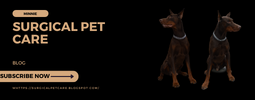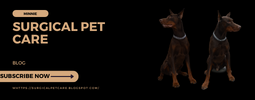Q: What is surgical pet care?
A: Surgical pet care refers to the medical procedures and care that pets receive before, during, and after surgical operations.
Q: Why might my pet need surgical pet care?
A: Pets may need surgical pet care for a variety of reasons, such as to remove a tumour, repair a broken bone, or correct a medical condition.
Q: What should I expect during my pet's surgical procedure?
A: Before surgery, your pet will likely be given a physical examination and possibly some blood tests to ensure they are healthy enough for the procedure. During surgery, your pet will be under general anaesthesia and monitored closely by a veterinary team. After surgery, your pet will be moved to a recovery area where they will be closely monitored until they are stable and awake.
Q: Is surgery safe for my pet?
A: As with any medical procedure, there are risks associated with surgery. However, with proper care and monitoring, the risks can be minimized. Your veterinarian will discuss the risks and benefits of surgery with you before the procedure.
Q: How can I prepare my pet for surgery?
A: Your veterinarian will provide you with specific instructions for preparing your pet for surgery, such as fasting before the procedure. It's important to follow these instructions carefully to ensure your pet's safety and well-being.
Q: What should I do to care for my pet after surgery?
A: Your veterinarian will provide you with detailed post-operative care instructions, which may include administering medication, limiting activity, and monitoring your pet's incision site for signs of infection. It's important to follow these instructions closely to ensure your pet's full recovery.
Q: How long does it take for my pet to recover from surgery?
A: The recovery time for surgery varies depending on the type of surgery and the individual pet. Your veterinarian will provide you with an estimated recovery time and specific instructions for caring for your pet during this time. It's important to be patient and follow these instructions closely to ensure your pet's full recovery.


0 Comments